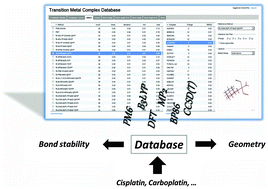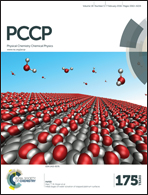Computational methods for the description of pharmacologically relevant platinum complexes – molecular structure and bond dissociation†
Abstract
Cancer is after cardiovascular disease the most frequent cause of death in Europe. In 28 of 53 countries considered in this area it is already the leading cause of death and expected to gain even more importance until the year 2020. Amongst the large arsenal of different anti-cancer drugs, platinum drugs belong to the first developed anticancer drugs and still have a large impact on cancer therapy. Nevertheless therapy with platinum-anticancer drugs is accompanied by severe adverse effects caused by frequent interactions with the amino acids of different human proteins. Computational chemistry offers methods to study such interactions and even those of not yet synthesized drugs in silico. For such studies a profound knowledge of the prediction quality of various computational methods towards platinum-drug-like complexes is necessary. By this article we are aiming on delivering important accuracy information of the frequently used computational methods. Most important findings are the high performance of the double hybrid functional B2PLYP for the calculation of geometries, even in small basis sets, followed by BP86 and PBE and the still acceptable performance of the semi-empirical Method PM6-D3H4X for extremely large systems. To follow absolute energies of the dissociation process, LPNO-CEPA and B3LYP-D3 can be suggested while SCS-MP2 shows an extremely narrow standard deviation and a low maximum error, which make it an ideal candidate for relative energy calculations in the exploration of reaction mechanisms.


 Please wait while we load your content...
Please wait while we load your content...